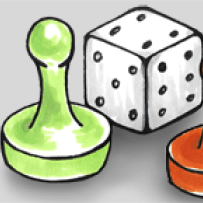
Primarily, you hear about it in relation to engaging consumers, adding game-like aspects to marketing initiatives, online communities, and existing projects, among other things. These game mechanics include activity points, progress monitoring, group and individual missions, and badges. There is another, more serious use for gamifaction that could foster huge growth for a company. Companies can use gamification in the workplace as a part of business process management to measure successful practices and drive outcomes and behaviors. Here are some ways to plan and implement gamification into your strategy.
1. Understand what is going on in the company. Game mechanics are a tool that can provide company leaders with information such as who the top performers are and what makes them successful, as well as what activities are generating the most sales. By tracking various metrics, this management process can help recognize key actions and steps to success.
2. Train employees. A company can create games that will help employees learn and practice the required skills and abilities for their positions. As employees complete learning programs and share knowledge to contribute to the development process, game mechanics like badges and rewards could come into play. For example, the Department of Defense is using games in its core curriculum and continuous learning and development programs to give employees practice in projects that are too expensive, large, or dangerous to execute regularly. Deloitte Leadership Academy also created an interactive learning program using badges, rewards, and checkpoints as well as means of boasting achievements on social media sites. In general, learning can be broken down into steps and missions, facilitating efficient mastery of a product or process. Deep practice is critical to training effectively, and it could be very productive to gamify this process.
3. Engage and motivate employees. According to a Gallup survey, 71% of U.S. workers are “not engaged” or “actively disengaged” in their work. This has negative implications for productivity and thus profitability is likely to suffer. Clearly, something must change. Gamification is one way that employee engagement can be improved. In a gamified workplace, engagement generally entails missions for teams or units involving specific tasks and subsequently, specific rewards that others can see. Also, game mechanics add a sort of positive stress that can be exhilarating and great for productivity.
4. Accordingly, utilize incentives to further this engagement. Whether an incentive is monetary or non-monetary, employers can develop sustainable engagement and begin to see more of the outcomes they want. Provide immediate recognition by highlighting successes. Give people access to resources and rewards in order to appeal to people’s desire for association. Demonstrate impact by allowing for bragging rights. These are some ways to give people a push towards excellence by putting incentives behind their actions.
5. Foster healthy workplace competition. On a similar note as engagement, gamifying work processes can add an inherent competitiveness that increases employee productivity. Gamification services can help companies collect data from various streams and display employee names on a leaderboard. Additionally, if incentives are widely visible, natural competitiveness fires up and other people work to reach their goals and reap the rewards.
6. Continuously evaluate processes. As discussed, gamification allows for tracking processes and thus understanding what is working and what is not working. The impact of changes can be identified with benchmarks put in place, and key actions can be observed and rewarded.
By applying gamification to the enterprise, companies can not only better understand, but also optimize business processes.

